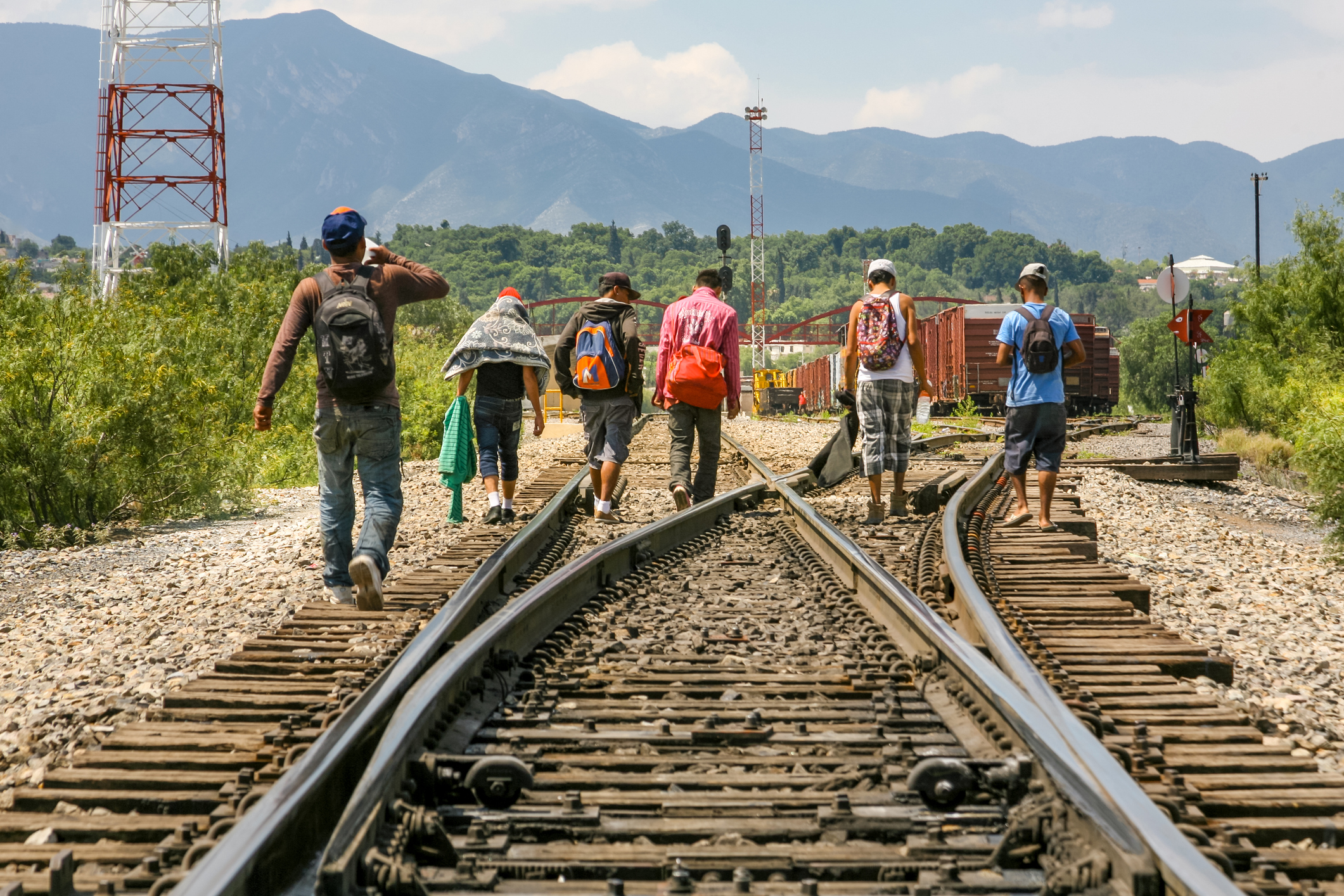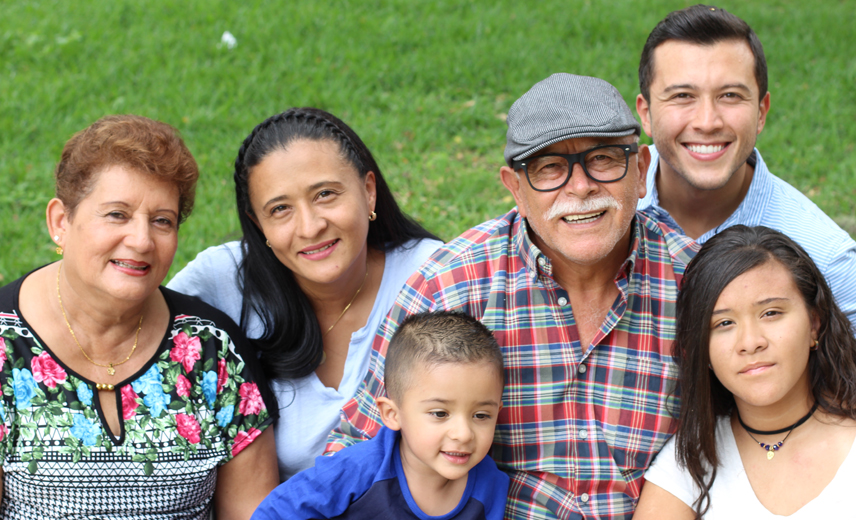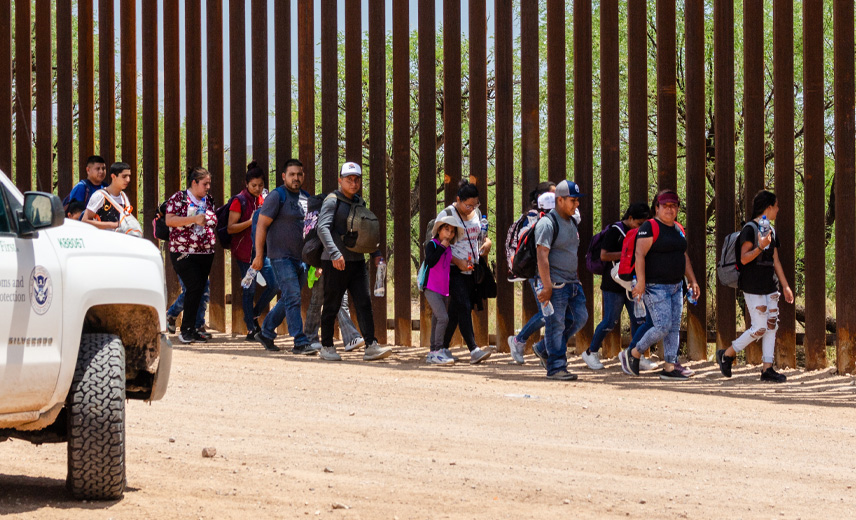Understanding Central American migrations

By Patricia Foxen, PhD, Deputy Director of Research, UnidosUS
Vice President Kamala Harris’s recent trip to Guatemala to meet with that country’s political leaders was one of several recent initiatives undertaken by the Biden administration to address the root causes of migration from the Northern Triangle Countries (NTCs) of Guatemala, El Salvador and Honduras to the United States—the nations driving what has come to be known as the U.S. “border crisis.”
Since the summer of 2014, an estimated 311,000 migrants have left NTC countries each year, and dramatic news stories about large numbers of would-be border crossers at the U.S.-Mexico border have dominated U.S. media headlines, largely shaping our nation’s public discourse around immigration. Unlike previous migrations, most recent Central American migrants have been unaccompanied minors and families with small children, a situation that has spawned a humanitarian challenge as government agencies have struggled to find adequate shelter and process them.
The cruel and exceedingly harsh asylum and immigration policies enacted by the previous administration in response to the crisis separated thousands of young children from their families and resulted in tens of thousands of migrants being turned away, forced to live in situations of protracted violence and limbo in Mexico or return to dangerous situations in their home countries. President Biden, seeking to redress the chaos created by these inhumane policies, has sought to respond to large waves of border crossers—more than 19,000 in March 2021 alone—amidst a global pandemic. Formally ending the highly destructive “Remain in Mexico” policy and cancelling Trump’s cruel limits on asylum eligibility for migrants fleeing gangs or gender-based attacks have been important first steps. However, fixing this complex situation, which has been decades in the making, will not happen in a few months or even a few years; a critical step, however, is to fully acknowledge the complex historic and sociopolitical contexts, as well as the localized root causes, that have led, and continue to influence, these large migratory flows.
MIGRATION FROM CENTRAL AMERICA HAS DEEP ROOTS
Media accounts often describe the large-scale migration of Central Americans as a relatively recent phenomenon; however, these displacements originated almost 40 years ago, propelled at first by brutal civil wars in the isthmus region—the result of centuries of stark historical inequalities and dominance by business and military elites, as well as marked U.S. intervention in the region.
Such long-term intervention, predicated on assumptions of white supremacy, has indeed been central to shaping the unequal economies and autocratic governments that have so weakened NTCs to this day. Starting with the emergence of newly independent nation states in 19th century Latin America, the Monroe Doctrine of 1893 was touted as an expression of positive U.S. opposition to European colonialism; in reality, however, the doctrine was based on the assumption that (largely Indigenous and mixed race) Latin Americans couldn’t be trusted to manage their own affairs and required supervision by the United States, then governed exclusively by white men. Throughout the 20th century, U.S. political and commercial interests came to be elevated over the rights of the people south of the border to self-determination, thus allowing American business interests to exploit the region’s natural resources through alliances with local elites and military dictatorships, backed by U.S. aid and, if necessary, overt or covert intervention (i).
By the mid-1970s and early 1980s, the massive inequality and oppression resulting from such arrangements had led to popular uprisings throughout the region; in response, governments unleashed reigns of brutal violence against entire populations, leading to the first waves of migration from NTCs the North. The devastating armed conflicts of the early 1980s, themselves significantly abetted by U.S. aid and cold war strategic interest in the region, wreaked havoc on rural and urban communities alike. Through state-sponsored violence—undertaken by military and paramilitary death squads—anyone deemed subversive could be “disappeared” or murdered, and entire communities were destroyed, deeply impacting both local economies and the social fabric, and leading to the first mass displacements to the United States. Through this historical lens, scholars have argued that both current and previous waves of migration from Central America thus reflect the inevitable “harvest” from seeds sewn by U.S. policy that long treated the region as part of its own informal empire (ii).
Although smaller numbers of educated, urban Central American immigrants had been arriving in the United States since the 1970s, the first significant waves of wartime refugees came in the mid-1980s, settling in communities across the United States where they could find jobs and faith-based or social support. By the mid-1990s, the huge demand created by American industries for cheap, exploitable labor, combined with the lingering aftermaths of war, lured increasing numbers of migrants to work in agricultural, meat processing, service, domestic, and industrial jobs across the country.

Sadly, in part because the United States had supported the brutal military regimes from which most fled, the asylum acceptance rate for refugees arriving in the United States from NTCs was close to zero, hovering around 2% during the first decade or so of migration. Nonetheless, thousands of border crossers were granted temporary work visas as they awaited their asylum hearings, giving rise to the famous asylum backlog that today exceeds a million cases. Most others, who were too poor and unskilled to qualify for legal immigration routes, lived in the in the shadows without legal documentation, many working two or three jobs to survive and send remittances back to their devastated communities. According to the Migration Policy Institute, the Central American immigrant population tripled between 1980 and 1990, and nearly half of today’s 3.5 million Central American immigrants arrived before 2000.
The immediate causes of migration have shifted over time, and differ somewhat between the three countries, but these highly disruptive events set the stage for continuing patterns of displacement to this day. The residues of war—deep inequality, political instability, corruption, a lack of jobs, and new forms of violence—have in many ways intensified in recent years.
Poverty in NTC countries remains extremely high. In Honduras, half of the population lives below the poverty line, and in Guatemala close to 80% of the indigenous population is poor. In many places, especially rural areas, there is a concerted lack of jobs, poor access to education, health and nutrition, and very little sustained investment by the state in infrastructure or services by governments—all factors which have been exacerbated by pandemic lockdowns. In some areas of Honduras and Guatemala, the expansion of global megaprojects such as mining, hydroelectric plants, and other extractive industries, rather than creating jobs, has often resulted in environmental depletion or contamination, the destruction of subsistence farming, growing local impoverishment. In recent years, climate change and erratic weather—including hurricanes, draughts, and volcano eruptions—have been another major force behind migrations from this region. In some areas such as the “dry corridor” that runs through these countries, shifting weather patterns have led to starvation and extreme desperation among parents unable to feed their children or foresee local solutions. In the past year alone, damage caused by Hurricanes Eta and Iota, in tandem with the COVID-19 pandemic, have led to massive increases in hunger—in Guatemala, the number of households living in hunger has doubled, and in Honduras it has increased by more than 50% since the onset of the pandemic.
Another major driver of Central American migration in recent years has been the significant social violence that characterizes daily life. Violent gangs such as the Mara Salvatrucha and Calle 18 target poor, vulnerable community members, and seeking to recruit, extort or otherwise intimidate youth and their families. The mass deportations from the United States of the past several decades stimulated or exacerbated gang violence, as early young male deportees imported U.S.-developed gang organizational structures in the region, and subsequent waves of deportees become easy targets or recruits, thus often seeking to flee again to the United States. More recent government crack-downs on gangs in El Salvador have gone hand in hand with increasingly autocratic behavior by the country’s president Nayib Bukele, creating growing concerns among human rights advocates.
One of the concerns that human rights advocates have about the region is that women and young girls in Central America are especially vulnerable to sexual violence and exploitation; the NTCs have some of the highest femicide rates in the world. In addition, organized and violent criminal networks and clandestine security apparatuses—often connected to wartime intelligence and military structures—are involved in the trafficking of drugs, people, and contraband throughout the region. Parallel to this violence is the entrenched corruption that characterizes political, judicial, military, and business sectors in all three countries; internationally backed anti-corruption missions in Guatemala and Honduras have met with resistance from powerful political elites in recent years.
The combination of these societal failures and environmental factors has led to a situation of despair among many Central Americans who simply cannot find safety or livelihoods for their families; children and youth in particular are extremely vulnerable in such environments. It is no coincidence that the quest for family reunification among children of migrants is, along with the availability of jobs and some degree of safety, one of the main “pull factors” drawing so many to the United States in recent years.
CENTRAL AMERICAN MIGRANTS ARE IMPORTANT TO U.S. SOCIETY
Lost in all the news stories about these current day border crossers, however, is the fact that vibrant Central American communities have for decades been settling successfully all over the United States, from the traditionally Latino states of Florida, Texas, and California to communities in New York, New England, and the Washington, DC area to southeastern states such as the Carolinas and Georgia and the meatpacking and agricultural communities of the Midwest. Of the roughly 3.5 million Central Americans in the United States, 40% are Salvadoran, 27% are Guatemalan, and 19% are Honduran. Over the past decades, some have been able to obtain lawful status through different means—through the TPS or DACA programs, through successful asylum claims, and many through family reunification—though many also remain undocumented or have been deported, often leaving their children and families in a precarious economic and social position.

As a group, Central American migrants have nonetheless sought to integrate to U.S. society as other immigrant groups have, and for many the economic and educational strides made in just one generation have been striking. For many, however, pre-migration stories that include poverty, violence, trauma, and low educational attainment, coupled with undocumented status, discrimination, and language barriers in the United States, have contributed to a challenging integration experience. Given their often marginalized situations back home, Central American migrants in the United States tend to have lower educational attainment, English language proficiency, and incomes than other immigrants. They also, however, participate in the U.S. labor force at a higher rate than other adults in the United States.
Central American migrants have also been a central force behind workers’ rights campaigns and union organization in migrant-dominated industries. It is worth highlighting the fact that “unskilled” (and often undocumented) Central American workers—the majority of whom perform work laboring in fields, processing food, attending to the sick and elderly, have been recast as “essential workers” during the pandemic, underscoring the unjust long-term exclusion of this population from our society. The children of these migrants, when given the proper educational and social supports, have also been able to surmount enormous challenges; one study, for example, found that the children of Central American immigrants, while having lower math and reading skills than other Latino students, show the greatest achievement gains in early childhood.
As President Biden and Kamala Harris seek to work with NTC governments to curb migration, it is thus important to remember that Central Americans have long been an essential, hard laboring part of our American population, not a threatening mass of “otherness” at the border. Developing a humane, fair and comprehensive regional framework to address current migrations from this region will necessitate a thoughtful revamping of the U.S. asylum system, expanded access to other lawful immigration avenues, and targeted aid to NTC countries that addresses both the extreme insecurity of citizens and the corruption and militarization at the highest of levels. The Biden administration, which has already removed a number of damaging Trump-era asylum policies, also aims to invest $4 billion in such regional aid. As experts suggest, however, if this approach is to be successful it cannot replicate the failed approach of the previous Alliance for Prosperity, an aid package harshly criticized for supporting a centralized, security-based approach that ultimately failed to decrease migration. Instead, such in-country support must be negotiated and resolved with strong input from multiple sectors of civil society within NTC countries (including national authorities, the private sector, churches, mayor, and community organizations). In order to produce viable, humane solutions and policies, the historical, lived experiences of Central Americans uprooted by wars, poverty, and other forms of dislocation must be placed at the center of such efforts.
————————————————————————————————————
i See generally, Walter LeFeber, Inevitable Revolutions: The United States in Central America, W. W. Norton and Company, 1993.
ii Juan Gonzalez, Harvest of Empire: A History of Latinos in America, Penguin Books, Revised Edition 2011.



